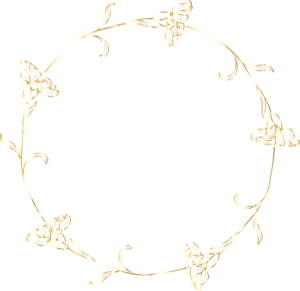
Gold IRA accounts enable investors to include physical precious metals like gold, silver, platinum, and palladium in their retirement portfolios, offering protection against inflation and market volatility. To establish a Gold IRA, one must already have an existing traditional or Roth IRA, and funds can be rolled over to a specialized custodian handling precious metals, ensuring compliance with IRS standards. The rollover process, whether direct or indirect (including the 60-day rollover), requires careful attention to deadlines and regulations to maintain tax-deferred status. Investors should engage with reputable custodians and dealers, familiarize themselves with specific rules and tax implications, and consider their retirement objectives and risk profile when deciding if a Gold IRA is suitable for them. A financial advisor with expertise in Gold IRA accounts can guide the process to ensure legal and regulatory standards are met while maximizing the benefits of this investment option. Understanding the rollover methods—direct or indirect—and managing them effectively within the 60-day window are crucial steps for a successful transition. Gold IRA accounts can be a strategic addition to a diversified investment portfolio, offering potential protection against economic downturns and inflation.
exploring the intricacies of retirement planning, an article that demystifies the process of rolling over to a Gold IRA account offers valuable insights for investors keen on diversifying their portfolios with physical gold. This guide delves into the legal framework and eligibility criteria necessary for executing a Gold IRA rollover, ensuring you navigate the procedural steps with confidence. From assessing your current retirement plan to understanding the compliance and reporting requirements mandated by the IRS, each aspect of this investment strategy is meticulously covered. Additionally, the article addresses fees, storage options, tax implications, and market trends to help you make informed decisions and avoid common pitfalls. Whether you’re new to precious metals or an experienced investor looking to update your approach, this comprehensive guide serves as a roadmap for safeguarding and enhancing your retirement savings with the enduring value of gold.
- Understanding Gold IRA Accounts: A Comprehensive Guide
- The Legal Framework Governing Gold IRA Rollovers
- Evaluating Your Current Retirement Plan for Gold IRA Conversion Eligibility
- Step-by-Step Process of a Gold IRA Rollover
- – Assessing Your Account Type and Eligibility
- – Initiating the Rollover: Direct vs. Indirect Rollovers
Understanding Gold IRA Accounts: A Comprehensive Guide

Gold Individual Retirement Accounts (IRAs) offer a unique opportunity to diversify retirement portfolios with precious metals, providing a hedge against inflation and market volatility. Unlike traditional IRAs that invest in stocks, bonds, or mutual funds, a Gold IRA account allows for the investment in physical gold, silver, platinum, and palladium coins or bars that are approved by the Internal Revenue Service (IRS). These accounts serve as a tangible asset that can potentially preserve and even increase wealth over time.
To initiate a Gold IRA rollover, individuals must first have an existing tax-deferred retirement account such as a Traditional IRA or a Roth IRA. The rollover process involves transferring funds from the current retirement account to a custodian specializing in precious metals. This transition is a tax-free transaction when done correctly, ensuring no penalties are incurred. It’s crucial to work with reputable custodians and dealers who comply with IRS regulations, as they guide you through the selection of eligible precious metals and ensure your investment adheres to the Gold IRA accounts rules. The rollover process typically involves a direct transfer from the existing IRA to the new Gold IRA account, or in some cases, a 60-day rollover where funds are temporarily distributed to you, to be deposited into the new account within the specified timeframe. Prospective investors should thoroughly review the guidelines and consider the tax implications of their decisions when embarking on this financial strategy.
The Legal Framework Governing Gold IRA Rollovers

Gold Individual Retirement Accounts (IRAs) offer a unique avenue for investors to diversify their retirement portfolios by including physical gold, silver, platinum, and palladium. The legal framework governing Gold IRA rollovers is rooted in the Employee Retirement Income Security Act of 1974 (ERISA), which sets the minimum standards for most voluntarily established retirement and health plans in private industry to provide protection for individuals in these plans that are subject to it. Under ERISA, Gold IRA rollovers are facilitated by allowing individuals to transfer funds from their existing tax-advantaged retirement accounts, such as a Traditional or Roth IRA, into a self-directed IRA that permits investment in precious metals.
The Internal Revenue Service (IRS) provides specific guidelines and conditions under which a rollover can be executed. According to the IRS, a direct rollover is when the financial institution holding the retirement funds directly transfers the funds to the Gold IRA custodian. This method avoids the potential for taxable income because it doesn’t involve the account holder. Another option is the 60-day rollover, where an individual can withdraw funds from their existing IRA and have up to 60 days to deposit those funds into a Gold IRA. However, this method must be handled carefully to avoid early withdrawal penalties and taxes if the 60-day period is not adhered to strictly. The Taxpayer Relief Act of 1997 introduced provisions for these rollovers, ensuring that the transfer of funds does not trigger immediate taxation or early withdrawal penalties, provided the rollover rules are followed. This legal framework ensures that Gold IRA rollovers are conducted within a tax-advantaged context, preserving the integrity and intent of retirement savings plans.
Evaluating Your Current Retirement Plan for Gold IRA Conversion Eligibility

When considering a rollover to a Gold IRA account, it’s crucial to assess your current retirement plan to determine if this conversion is a suitable option for you. A thorough evaluation of your existing retirement portfolio will help identify whether gold ira accounts align with your investment goals and risk tolerance. Factors such as the types of assets held, the overall value of your retirement savings, and your retirement timeline are key considerations. It’s important to review the rules associated with your current plan, particularly regarding rollover procedures, as these can vary depending on whether your plan is a 401(k), IRA, or another type of retirement account. Understanding the tax implications and potential penalties for early withdrawal, if applicable, is also necessary. By comparing the benefits and risks of diversifying into physical gold and other precious metals, you can make an informed decision on whether a Gold IRA rollover suits your long-term financial strategy. This process requires careful planning and consultation with a financial advisor who specializes in retirement accounts to ensure that the transition to a Gold IRA is executed smoothly and in compliance with all regulatory requirements.
Step-by-Step Process of a Gold IRA Rollover

When considering a rollover into a Gold IRA account, it’s crucial to navigate the process with precision and understanding. The step-by-step process begins with an assessment of your current retirement plan to determine if a rollover is permissible and advantageous. Once you’ve confirmed that a rollover is viable, you should contact a reputable custodian specialized in Gold IRA accounts. This custodian will guide you through the necessary procedures and provide the required forms for initiating the rollover process.
You will receive a distribution from your existing retirement plan, which you must then forward directly to the custodian of your new Gold IRA account within a stipulated timeframe to adhere to IRS regulations. The custodian will then segregate and transfer the funds into gold, silver, platinum, or palladium coins or bars that are approved by the Internal Revenue Service (IRS) for inclusion in an IRA. Throughout this process, it’s imperative to maintain records of all transactions and communications to ensure compliance with tax laws and avoid any penalties or early withdrawal fees. By carefully following these steps, you can successfully transition your retirement savings into a Gold IRA account, potentially benefiting from the diversification and stability that precious metals can offer in your retirement portfolio.
– Assessing Your Account Type and Eligibility

When considering a rollover from your existing retirement account to a Gold IRA account, it’s crucial to understand the type of account you currently possess and its eligibility for such a transaction. Traditional IRAs, Roth IRAs, and employer-sponsored plans like 401(k)s or 403(b)s all have their own rules regarding rollovers. Typically, these accounts allow for one rollover every 12 months per account type, as per IRS regulations. It’s important to verify your account’s eligibility by reviewing the plan documents or consulting with a financial advisor. Once you confirm that your account is eligible, you can initiate the rollover process by instructing your current plan custodian to transfer funds directly to the custodian of your new Gold IRA account. This direct transfer is known as a trustee-to-trustee transfer and helps ensure compliance with IRS rules, thereby avoiding any taxable event during the rollover.
Gold IRA accounts offer investors a unique opportunity to diversify their retirement portfolios by including physical gold, silver, platinum, and palladium. To facilitate a seamless transition, you must choose a reputable custodian experienced in precious metals who will manage your Gold IRA account. The chosen custodian must be approved by the IRS and adhere to specific storage requirements for the physical metals. These requirements typically mandate that the metals be stored with an IRS-approved depository, ensuring their safety and security. By carefully assessing your current retirement account type and eligibility, you can embark on the Gold IRA rollover process with confidence, positioning yourself to benefit from the potential advantages of including precious metals in your long-term investment strategy.
– Initiating the Rollover: Direct vs. Indirect Rollovers

Navigating the process of rolling over a traditional IRA into a Gold IRA account involves understanding the two primary methods available: direct and indirect rollovers. A direct rollover is a straightforward procedure where funds are moved directly from the existing IRA custodian to the new Gold IRA custodian. This method is favored due to its simplicity and the absence of tax implications, as the transaction does not involve the account holder directly.
Conversely, an indirect rollover involves the account holder receiving the funds from the traditional IRA and then having 60 days to deposit them into a Gold IRA account. It’s imperative to ensure that the amount rolled over is not less than the total amount received to avoid tax penalties. This method can be more complex, as it requires careful management of the funds between accounts within the allotted time frame. Both options have their advantages and considerations; thus, individuals should assess their financial situation and preferences before deciding which rollover type suits them best. Gold IRA accounts offer a unique opportunity to diversify retirement portfolios with physical gold, a choice that many investors find appealing for its potential hedge against inflation and market volatility.
Navigating a Gold IRA rollover can be a prudent step for individuals looking to diversify their retirement portfolio with precious metals. This guide has demystified the process, from understanding the unique benefits of Gold IRA accounts to outlining the legal framework that governs such rollovers. By evaluating your current retirement plan and determining eligibility, you are better equipped to proceed with confidence through the step-by-step process. Whether opting for a direct or indirect rollover, this comprehensive overview equips you with the necessary knowledge to make informed decisions about your financial future. As you consider the advantages of gold as an investment within your IRA, remember that due diligence and professional advice are key to successfully integrating Gold IRA accounts into your retirement strategy.







